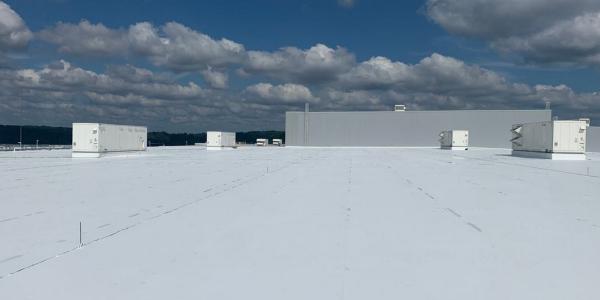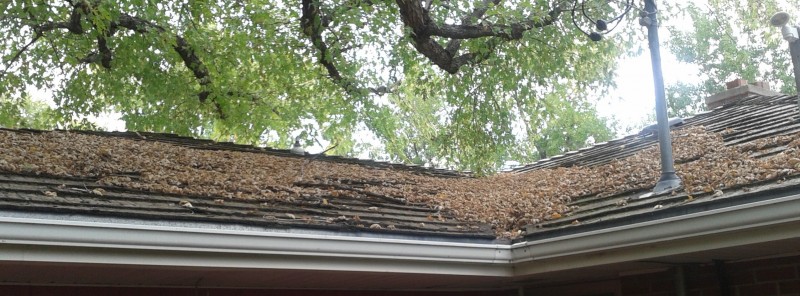The circle of life — Roofing edition!

By KARNAK.
Dive into the stages a roof goes through over the course of time and how to balance maintenance and replacements to keep the roof healthy and performing well for as long as possible.
Roofing is a big investment for people and one that they want to last for as long as possible. In order to achieve optimal performance and durability a roof must be taken care of. This includes some routine maintenance along with knowing when a replacement is a better option for economic and logistical reasons. If improperly maintained, a roof will lose its monetary value as an asset and become a liability to the safety of the people around it because of deterioration. This article from the experts here at KARNAK goes through some of the key stages in a roof’s lifecycle and what common maintenance needs come up at each.

The repair and maintenance window
The Roof Lifecycle diagram above provides a linear scale showing the three phases of a roof and when it would most benefit by repair and maintenance or restoration or, finally, need to be replaced. The far left or “Green Sector” represents when a roof is of great asset value to the owner. Roofs in the green may be aged (5-9 years old) or newly installed with 15 plus years of potential service life remaining. Even though it is early in the roof’s service life, this sector shows the benefits of routine maintenance and calls consideration to applying a coating to provide a sacrificial layer to protect the underlying roof system from direct exposure to UV and the elements as well as improve reflectivity for maximum potential energy savings. Minimal cost outlays here for proactive maintenance can reap huge benefits shown by longer service life and less money spent per square foot per year in maintaining the roof.
The restoration window
The “Orange Sector” is a critical time in the lifecycle of a roof. Here is where the roof has visible deterioration and little service life remaining, prompting the owner to consider replacement soon. Roofs in the orange sector require more repairs costing owners more than double the cost per square foot per year to maintain versus roofs in the green sector. A roof in the orange sector is becoming a liability but with a restoration system, maybe brought back to provide asset value. If the roof is evaluated and found to be dry (or mostly dry) internally and sound, it may be a candidate for a restoration system. This would include removing and replacing any wet insulation and roofing with like material, sealing and repairing, in addition to a coating system application. All of this is considered maintenance and maybe fully tax deductible in the year of installation. Timing is critical because if left unchecked, the roof will quickly deteriorate to the point where a replacement is necessary.
The replacement window
To the far right or “Red Sector” is the point in a roof’s lifecycle where widespread failure is occurring or inevitable. The roof has little to no remaining service life requiring a re-roof or new roof to be installed. If the roof already has two roofs, then a complete tear-off and new roof is required. A re-roof or new roof will require compliance with local and state building codes and must be amortized over several years per Internal Revenue Service laws and regulations. Re-roofing or new roofing may include the addition of added insulation and will be more costly and disruptive to the owner versus restoration.
Conclusion
Keeping the roof in the green sector where it provides the most value is the goal of any successful proactive maintenance program. Identifying a roof is in the orange sector and taking action is even more critical. Restoration here focuses on repairing deficient existing roofs to increase their service life and asset value. The restoration process identifies problems and critical areas unique to the roof and focuses on repairing just those areas, instead of removing the entire roof and installing a new roof system or covering with a new roof overlay. This alone can save building owners thousands of dollars instantly. Proactively managing the roof is the best way an owner can lower their yearly building maintenance costs expenditures.
Original article source: KARNAK
Disclaimer: The information provided on AskARoofer.com or information sent by emails is the opinion of the writers. It is the responsibility of the reader to check for accuracy in one's own jurisdiction, as there are different codes and restrictions for different parts of the country. AskARoofer.com does not accept any liability for the use of information on this website or email. AskARoofer.com has no controls over product failures, installation, or climate conditions that may change the roofing process in your area. Our information is in general to our area and cannot be the same as your local town or state. It is advised to seek the local Building Department, Licensed Contractor, and local Product Representative for proper installation requirements and code enforcement when installing a new roof.
Have a question? AskARoofer.
Find your local roofing contractor in the AskARoofer™ Contractor Directory.













Comments
Leave a Reply
Have an account? Login to leave a comment!
Sign In